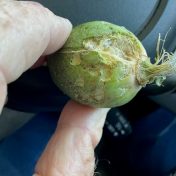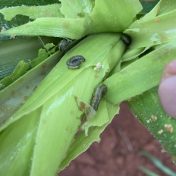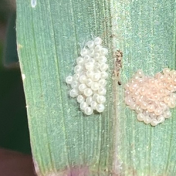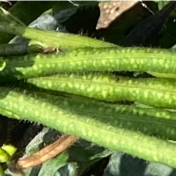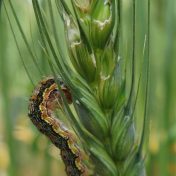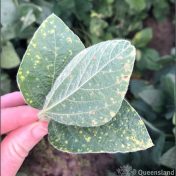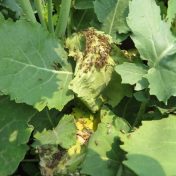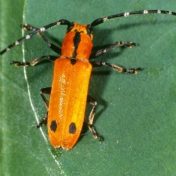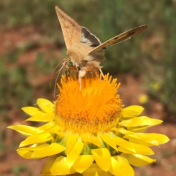There have been reports of mice activity in some crops around the Central Highlands, including grain sorghum, mungbean and cotton. Numbers of house mice (Mus domesticus) are generally low in cropping areas, but plagues can occur when conditions are favourable. Mouse populations have the potential to build rapidly and can do considerable damage in high numbers. Controlling plagues is both… Read more »
Powdery mildew has been detected in several mungbean crops growing in southern Queensland within the last couple of weeks. Powdery mildew in mungbean is caused by the fungal species, Podosphaera xanthii and Erysiphe vignae. Two fungicide options are currently under permit to manage the disease, including tebuconazole products (PER13979 – download the permit from the APVMA portal for more details… Read more »
If you are managing fall armyworm (FAW) in maize, you may have noticed that the permit for Affirm® (emamectin benzoate) (PER93226) had disappeared from the APVMA permits portal. PER93226 was temporarily suspended whilst clarification was sought around withholding period (WHP) and use patterns. While PER93226 is now back on the APVMA permits list, it is important to note it has… Read more »
Fall armyworm (FAW) moth catches have increased significantly in some regions over the past few weeks (see trapping counts below). It is unclear whether this increase in trap catches is indicative of migration events (perhaps associated with the recent storm activity) or increasing night temperatures that allow for greater movement of moths that may have emerged locally. Very low densities… Read more »
A severe outbreak of phytoplasma disease has been reported in mungbeans from the Burdekin region. Symptoms of little leaf, phyllody (greening of flower structures) and puffy pod became obvious in mid-late October and have now affected a high incidence of plants in a 25 ha planting. Puffy pod affected plants typically remain green for longer than healthy mature plants. This… Read more »
Many regions in Qld and northern NSW are still experiencing an outbreak of Helicoverpa armigera in wheat. Before the last significant outbreak occurred in 2016, it had been many years since anyone had seen such an event, and while there was a smaller outbreak in 2020, it was not on the scale or severity of this year. In many crops… Read more »
There have been several recent reports of fungal diseases in winter and spring crops in the northern grains region. Cereal rusts Rust has been detected in cereal crops growing in central and southern Queensland this winter/spring. Monitor crops closely, keeping an eye out for pustules on stems and leaves, and submit rust samples for pathotype testing to the University of… Read more »
Grain growers and agronomists in northern New South Wales and southern Queensland have a unique opportunity to be involved in a Rutherglen bug (RGB) project to better inform RGB management strategies by either: reporting Rutherglen bug sightings online or signing up for a sampling kit to collect Rutherglen bugs for DNA analysis. A native migratory species, Rutherglen bug causes occasional… Read more »
Last week the Australian Pesticides and Veterinary Medicines Authority (APMVA) updated minor use permit PER88226 for the in-furrow application of fipronil to manage lucerne crown borer (Zygrita diva, LCB) in soybeans at planting. Changes include: Extension of expiry date to 30 September 2025 Addition of a re-entry statement and S161 statement Adjustments to the protection statement Moving spray drift to… Read more »
Spring has sprung, and as is typical following a wetter winter, insects are abundant in crops. There are native armyworms in winter cereals from Central Queensland to northern NSW. Aphids are abundant in winter cereals, canola and faba beans. Key drivers of pest abundance in wetter seasons are the increased availability of plant hosts over winter and into spring and… Read more »
